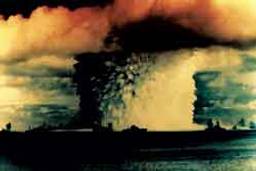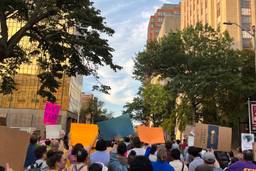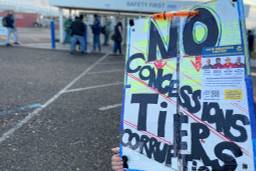Klamath Water Babies
Anti-government farmers wouldn’t have prospered without federal handouts.
Jeffrey St. Clair
Not since Shay’s Rebellion has a popular uprising against the government enjoyed such jaunty press coverage. When a militant band of irrigators in the Klamath River basin of southern Oregon thumbed their noses at the Bureau of Reclamation and illegally diverted water into their fields of alfalfa, politicians such as Oregon Sen. Gordon Smith rushed to their side, calling them heroes.
Press accounts portrayed the irrigators as hard-scrabble farmers, versed in the values of Jefferson’s agrarian democracy, defending their livelihood against an out-of-control federal government. Even Willie Nelson and his FarmAid organization forwarded messages of solidarity. To top it off, there was near unanimous agreement that the proximate blame for the farmers’ dire straits resided with the unfortunately named suckerfish.
The battle of the Klamath rests on a number of myths, perhaps none so frail as the supposed plight of the farmers themselves. It has been widely reported that the feds’ decision to shut off irrigation water to the farmers put 1,400 farms in jeopardy. It should be remembered, however, that the irrigation district was heavily subsidized by the federal government, which not only footed most of the bills, but turned the Klamath National Wildlife Refuge into croplands for the farmers.
As much as the Klamath farmers decry the federal government, their farms exist almost solely because of generous federal handouts. Indeed, the dams, irrigation canals and headgates were all constructed with federal money, which they partially paid back by growing crops on federal land. “The debt the Klamath water users owed the United States came to about $70 million for project construction with no interest,” says Phil Doe, a former environmental compliance officer for the Bureau of Reclamation.
The Klamath refuge’s once-extensive marshlands provide one of the most important bird habitats in the world. More than 2 million birds stop here to feed and rest during spring and fall migrations. Plus, more than 1,000 eagles, one of the densest populations in North America, roost here every year. Drained of water and parched by drought, those marshlands have now been transformed into a fissured bed of caked mud, with dust devils rising off land that should be the hunting ground of herons and osprey.
While the suckerfish, once a staple in the diet of the Klamath tribes, gets all the attention, the Klamath River also once boasted the most robust salmon fishery south of the Columbia River. No more. Dams, withdrawals for irrigation and toxic runoff from chemical agriculture have destroyed the fishery. The water in the once crystalline streams is now murky, algae-clotted and emits a putrid odor.
The Klamath coho salmon has landed on the Endangered Species List, and the commercial salmon fishery has been put out of business largely by the upstream irrigators. “Those farmers are water robbers,” says Tom Stockley, a former commercial salmon fisherman from Eureka, California. “Commercial fishermen have given up, given up, given up. I think it’s time for someone else to give up something.”
The salmon fishermen aren’t the only locals who are unimpressed by the belligerence of the farmers. Bonanza, Oregon – a small town inside the basin itself – was once known for the purity of its water, which gushed forth from dozens of springs near town. Now the town’s water supply is contaminated with toxins, algae and coliform bacteria. Residents must boil their drinking water and add bleach to their bathwater. The culprit: the Klamath farmers, whose toxic runoff has contaminated the town’s wells and natural springs.
At the end of August, the town decided to sue the Klamath Basin Irrigation District. It wasn’t an easy decision to make. Each time the problem was debated at City Council meetings, the Klamath farmers would show up en masse. “Whenever we have meetings, we get shouted down, overpowered,” Former Bonanza City Councilman Bob Hoylman told the Portland Oregonian. Hoylman said that he finally resigned his position because of the rising tensions and death threats: “These people, they’re out for blood.”
Doe recalls urging his bosses at the Bureau of Reclamation to close the Klamath refuge to farmers more than a decade ago. “But no one wanted to do it,” he says. “The payments for the leasing of wildlife refuge land were used to pay down the debt on the construction of the Klamath basin irrigation infrastructure – the same system that is destroying the refuge. Does it get any better than that? But now look at the ugly situation you’ve got: you’re losing salmon, suckerfish, eagles, and you’ve poisoned the water quality in the entire basin. To those who argue that we need to help the Klamath irrigators out in their hour of need, maybe even buy them replacement land, I say, save it for those who really need it and deserve it.”





